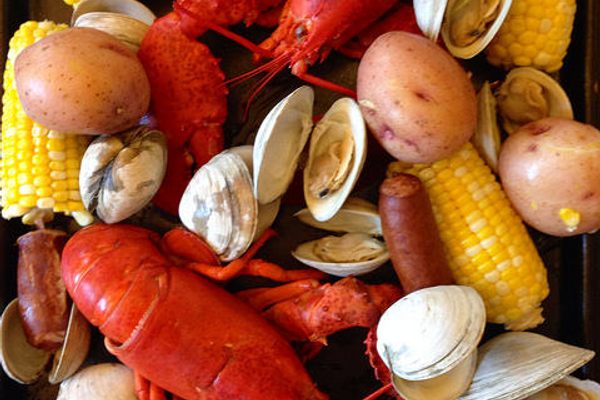The state fish of Connecticut, the shad, is a small, bony creature that residents cook by nailing to planks in front of a fire.
Small and bony fish don’t normally become beloved seafood staples, but the shad entered Connecticut culture through sheer ubiquity. In New England’s colonial days, swarms of shad annually swam from the North Atlantic to mating areas upriver. Each spring, farmers left their crops, easily caught shad in nets, and cooked them on planks—a method Native Americans taught them.
The bounty was a blessing, except when it wasn’t. Prisoners revolted against being fed shad every day, and one 19th-century story describes the shad as the devil’s creation. A single fillet contains around 1,000 minuscule bones, and the laborious deboning process helps explain the shad’s bad rap and its working-class association that persisted through the 19th century.
But in the late 1800s, the fish underwent a major rebranding. Appealing to the burgeoning middle class’s newfound interest in travel and Americana, marketers advertised the shade bake as a quintessential springtime event. Shad bakes took off in New England and mid-Atlantic states, although Connecticut residents have been most vocal about claiming it as their own. While the same surplus of shad hardly exists today, shad is still available in seafood markets from May through roughly mid-June, and a huge annual shad bake in Essex, Connecticut, has been a local source of pride for decades.
The first step to a successful shad bake is skillful use of a boning knife. Once the fish are deboned, organizers nail the butterflied fillets to planks planted in a circle surrounding hot coals. Angling the planks just right allows the shad to release excess oil, and the planks—which are usually hickory, oak, or cedar—impart flavor and cook the shad through in a way that doesn’t require flipping.
When the shad is ready, a grill-master shouts “board!” and helpers remove them from the fire. Cooks often add a dash of paprika, olive oil, and bacon. Otherwise shad is eaten as is, in all of its smoky, crusty glory. Detractors complain about the bones, but the fish’s Latin name, Alosa sapidissima, means “savory” or “most delicious.”
Written By
 paulamejia
paulamejia
Sources
- archives.newyorker.com/?i=1959-04-04#folio=CV1
- www.bbc.com/travel/story/20170905-the-new-england-fish-dish-that-saved-a-nation
- www.sfgate.com/food/article/A-little-effort-makes-Shad-a-tasty-dish-3091642.php
- books.google.com/books?id=N78aCgAAQBAJ&pg=PT504&lpg=PT504&dq=shad+bakes+1800s&source=bl&ots=80DKkyXU7x&sig=IFnv__WjtnTEsfeBQg6f-jXZ-cQ&hl=en&sa=X&ved=0ahUKEwjz_PHJ67HWAhXLqlQKHYCnBmUQ6AEIQDAG#v=onepage&q=shad%20bakes%201800s&f=false
- www.seafoodsource.com/seafood-handbook/finfish/shad-american
- www.atlasobscura.com/articles/meet-the-fish-that-made-america-great
- barbecuebible.com/newsletter/aromatic-wood-grilling/
- www.washingtonpost.com/archive/lifestyle/food/1996/04/24/shad-woes-shad-wins/a0bdcf96-149f-45bc-af98-71e3945ad00a/?utm_term=.dd53e4db59cd















